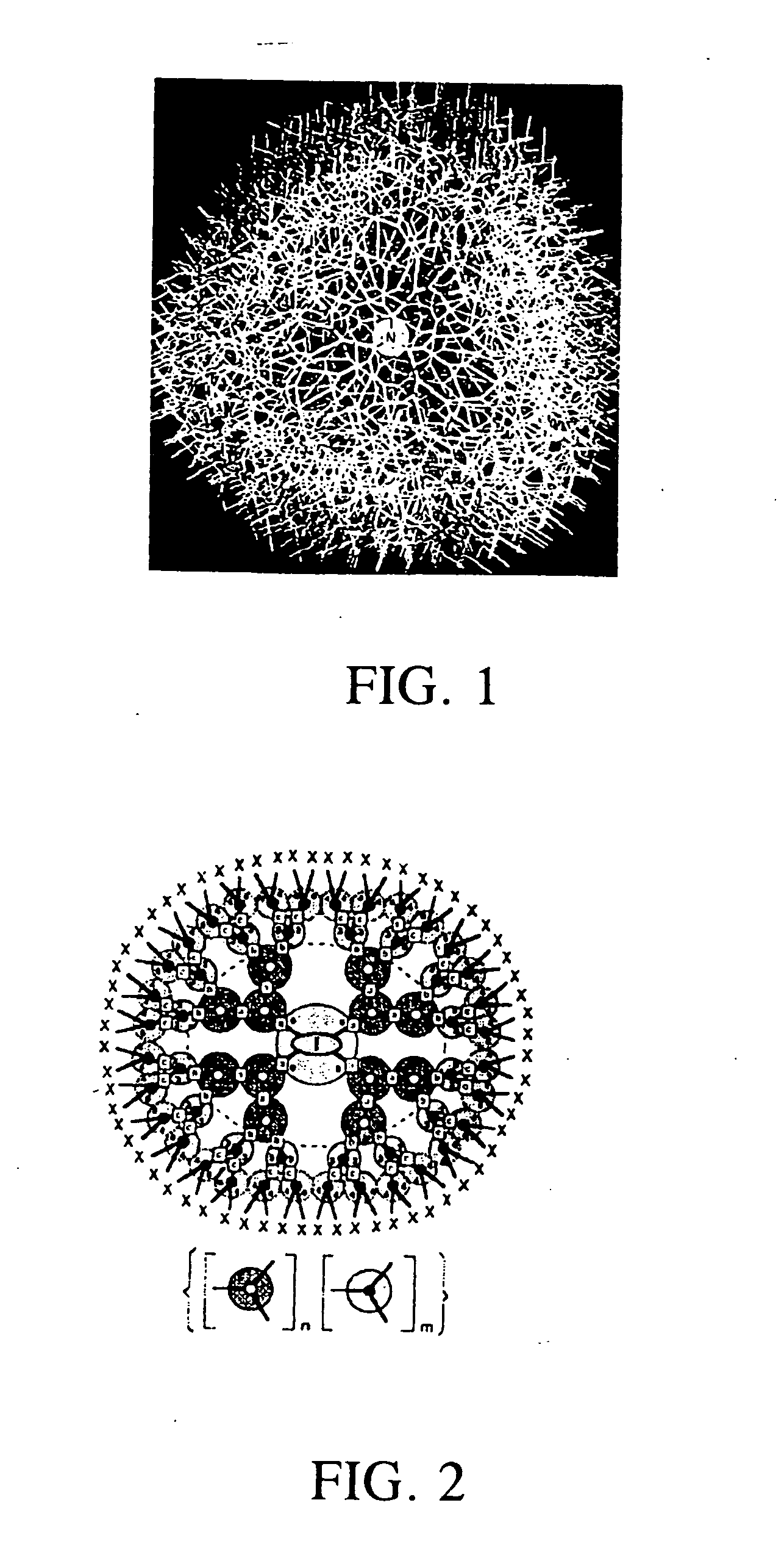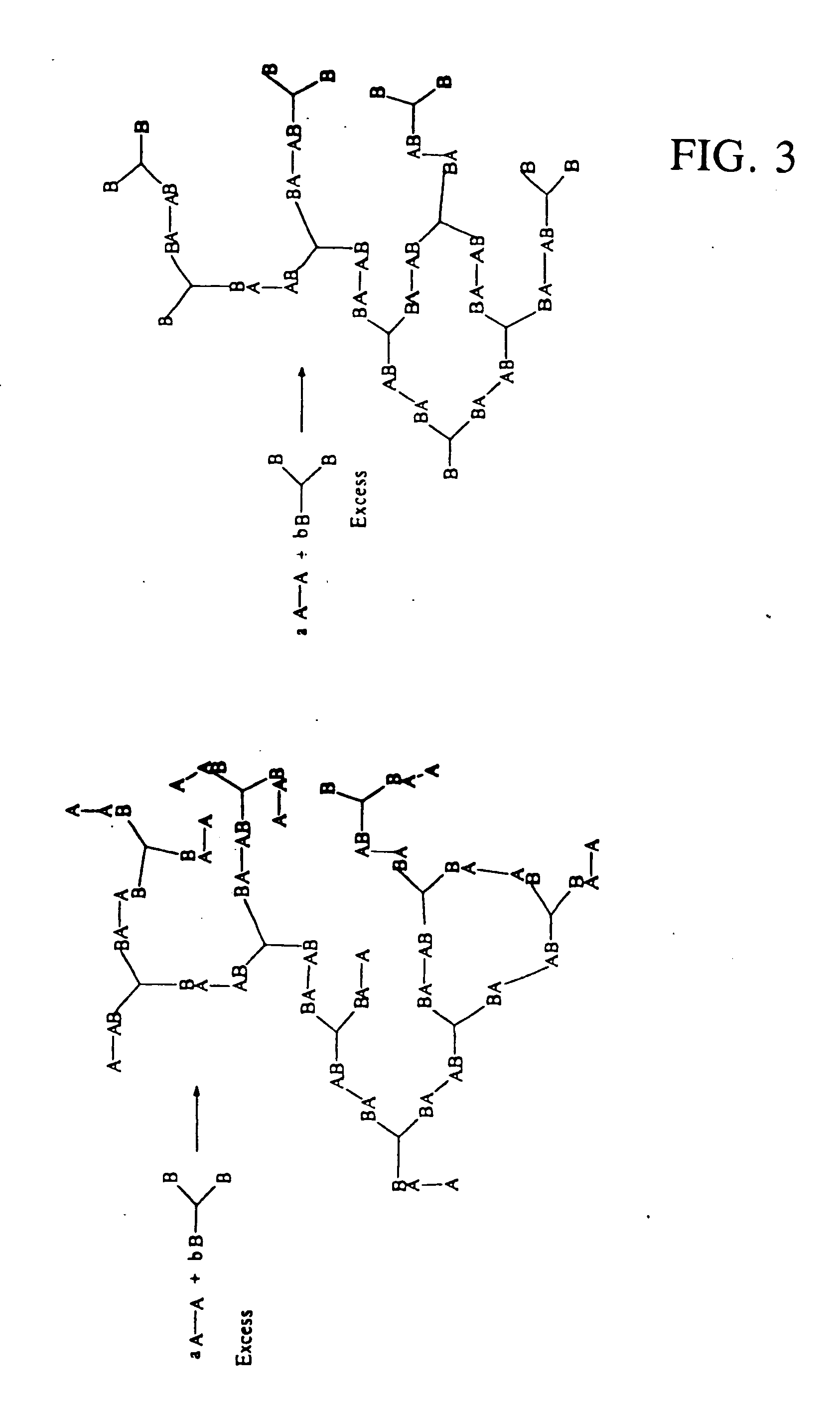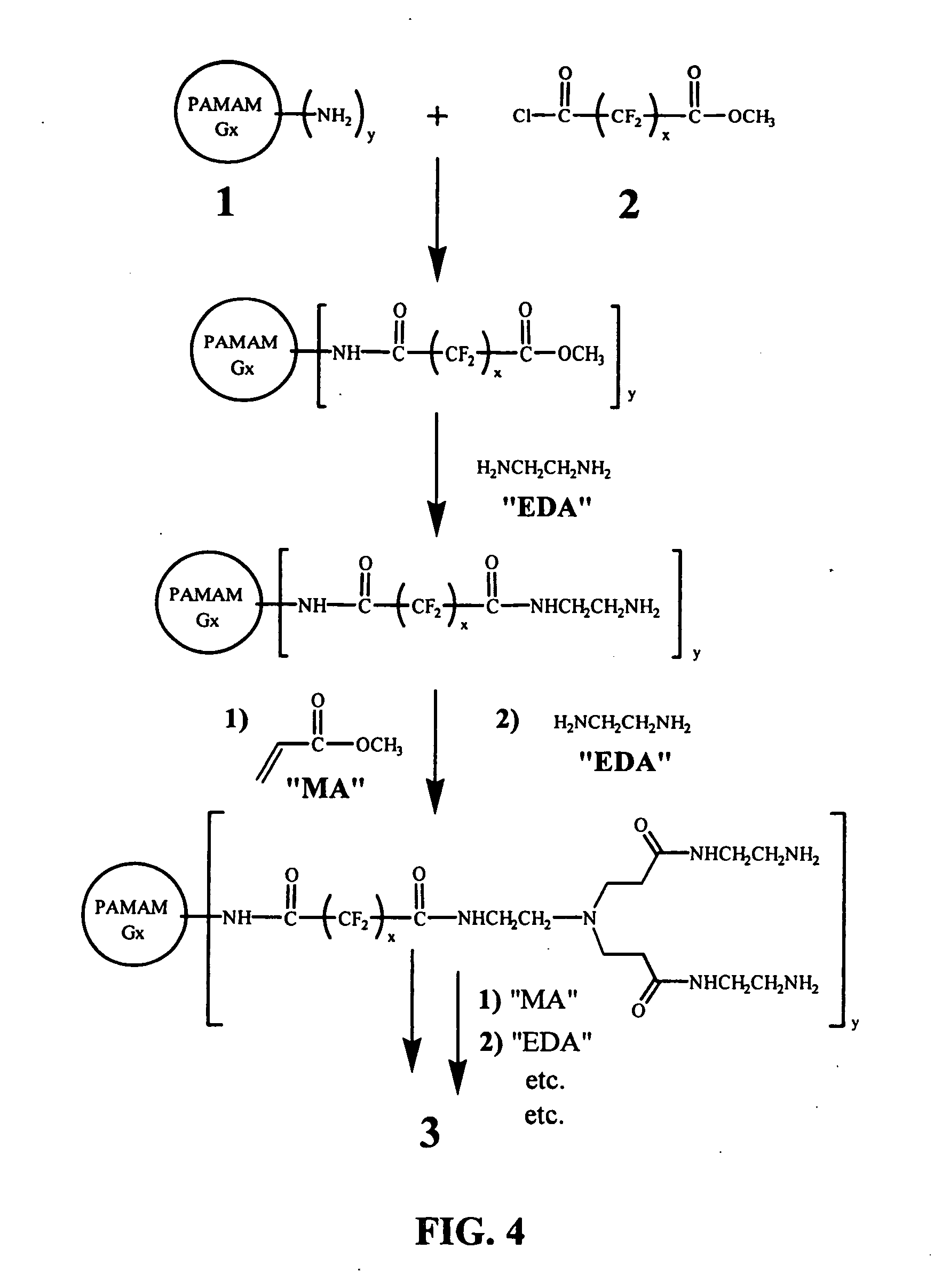Nano-structured blood substitutes
a blood substitute and nano-structure technology, applied in the field of compounding, can solve the problems of increased systemic and pulmonary arterial pressure, unsatisfactory vasoconstriction, etc., and achieve the effects of improving long-term storage stability, temperature stability, and reducing physiological side effects
- Summary
- Abstract
- Description
- Claims
- Application Information
AI Technical Summary
Benefits of technology
Problems solved by technology
Method used
Image
Examples
example 1
[0045] The overall strategy of the synthesis of a dendritic polymer compound capable of carrying oxygen is schematically illustrated in FIG. 4. In the first step, an amine terminated PAMAM dendrimer is reacted with a perfluorinated acid chloride-methyl ester, which may be prepared though mono-hydrolysis of perfluorinated dimethyl ester, followed by conversion to acid chloride. The acid chloride functional group will attach preferentially to the amine end-groups of the PAMAM dendrimer due to its higher reactivity. The strategy for attaching hydrophilic dendritic branches to the omega ends of the fluorocarbon spacer arms is also illustrated in FIG. 4. Additional generations of PAMAM dendrons may be grown divergently from the surface of the modified dendrimer by repeating the last two steps shown in FIG. 4 (addition of methyl acrylate and ethylene diamine) as many times as desired. Repetition of these two steps is expected to allow complete water solubility of the resulting compound.
example 2
[0046]FIG. 5 illustrates a strategy for the synthesis of multi-layer perfluorinated dendrimers, which is based on acid chloride-methyl ester and di-protected triamine. The first step involves coupling of three equivalents of acid chloride methyl ester with a triamine. This is followed by reaction of the obtained product with three equivalents of di-protected triamine. Because it contains two protected groups, stoichiometric amounts of the di-protected triamine will be sufficient. The final step involves removal of the BOC protecting groups, which can be achieved using well-known synthetic polypeptide chemistries, such as treatment with trifluoroacetic acid or sulfuric acid in dioxane. Subsequent generations of branches may be grown through sequential addition of acid chloride-methyl ester and di-protected triamine, followed by removal of the protecting groups. The resulting multi-layered perfluorinated dendrimer may be utilized as an oxygen carrier for various applications without f...
example 3
[0047]FIG. 6 schematically illustrates synthesis of hyperbranched perfluoro polyamide.
[0048] Perfluoro dimethyl ester may be polymerized with triamine in a one-step, one-pot reaction, without use of protecting groups. Formation of a crosslinked network may be avoided through careful adjustment of stoichiometry, as discussed above. The resulting hyperbranched perfluoro polyamide may be used as an oxygen carrier in biomedical and / or biotechnical applications.
[0049] A 250 mL round bottom flask was charged with tris(2-aminoethyl)amine (TREN) (13.0 g, 0.0888 mol) and anhydrous MeOH (100 mL). The flask was flushed with N2 for 3 minutes. The solution was cooled to −20° C., followed by dropwise addition of a solution of dimethyl hexadecafluorosebacate (34.56 g, 0.0666 mol) dissolved in 120 mL anhydrous methanol and 30 mL anhydrous THF into the mechanically stirred reaction mixture. After stirring for 2 hours at −20° C., the reaction mixture was allowed to warm to room temperature, and was...
PUM
| Property | Measurement | Unit |
|---|---|---|
| Particle sizes | aaaaa | aaaaa |
| droplet diameter | aaaaa | aaaaa |
| size | aaaaa | aaaaa |
Abstract
Description
Claims
Application Information
 Login to View More
Login to View More - R&D
- Intellectual Property
- Life Sciences
- Materials
- Tech Scout
- Unparalleled Data Quality
- Higher Quality Content
- 60% Fewer Hallucinations
Browse by: Latest US Patents, China's latest patents, Technical Efficacy Thesaurus, Application Domain, Technology Topic, Popular Technical Reports.
© 2025 PatSnap. All rights reserved.Legal|Privacy policy|Modern Slavery Act Transparency Statement|Sitemap|About US| Contact US: help@patsnap.com



